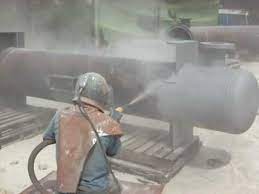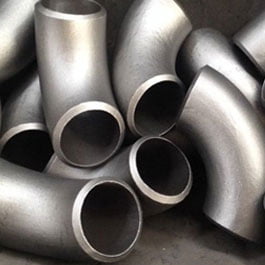What’s the sand blasting?

The process of cleaning and roughening the surface of the substrate by utilizing the impact action of high-speed sand flow. Using compressed air as a force to form a high-speed jet to spray material (copper ore, quartz sand, diamond sand, iron sand, ) at high speed onto the surface of the workpiece to be treated, so that the appearance or shape of the outer surface of the Workpiece surface changes due to the action of abrasive on the surface of the workpiece and the cutting action, so that the surface of the workpiece acquires a certain degree of cleanliness and different roughness, so that the mechanical properties of the workpiece surface are improved. Therefore, it improves the fatigue resistance of the workpiece, increases the adhesion between it and the coating, prolongs the durability of the coating film, and also makes it easier to level and decorate the coating.
Applications Editorial Podcast
Principle sketch suction jets
Principle sketch of suction sandblasting
(A) workpiece coating, workpiece bonding, pre-treatment, sandblasting, can remove all dirt from the surface of the workpiece, such as B. rust skin, and form a very important basic pattern on the surface of the workpiece (d surface), and it can reach different degrees of roughness by interchanging abrasives of different grit, such as. Or make the connecting parts stronger and better quality.
(B) Castings burr surface, heat treatment after the workpiece cleaning and polishing sandblasting can clean the castings and forgings, heat treatment after the workpiece surface of all dirt (such as oxidation, oil and other residues), and polishing the workpiece surface to improve the finish of the workpiece can make the workpiece show a uniform and consistent original metal color, making the workpiece look more beautiful and beautiful.
(C) machined parts burr cleaning and surface beautification Sandblasting can clean the workpiece surface of the tiny burr and flatten the workpiece surface, eliminating burr damage and improving the quality of the workpiece. And sandblasting can play very small rounded corners at the joint of the workpiece surface, making the workpiece appear more beautiful and precise.
(D) to improve the mechanical properties of the part
Principle sketch suction jets
Principle sketch of suction sandblasting
(A) workpiece coating, workpiece bonding, pre-treatment, sandblasting, can remove all dirt from the surface of the workpiece, such as B. rust skin, and form a very important basic pattern on the surface of the workpiece (d surface), and it can reach different degrees of roughness by interchanging abrasives of different grit, such as. Or make the connecting parts stronger and better quality.
(B) Castings burr surface, heat treatment after the workpiece cleaning and polishing sandblasting can clean the castings and forgings, heat treatment after the workpiece surface of all dirt (such as oxidation, oil and other residues), and polishing the workpiece surface to improve the finish of the workpiece can make the workpiece show a uniform and consistent original metal color, making the workpiece look more beautiful and beautiful.
(C) machined parts burr cleaning and surface beautification Sandblasting can clean the workpiece surface of the tiny burr and flatten the workpiece surface, eliminating burr damage and improving the quality of the workpiece. And sandblasting can play very small rounded corners at the joint of the workpiece surface, making the workpiece appear more beautiful and precise.
(D) to improve the mechanical properties of the part
Sandblaster is the most widely used abrasive blast product. Sandblasters are generally divided into two categories: dry sandblasters and liquid sandblasters, and dry sandblasters can be divided into two categories: inhalation type and pressure type.
Suction type dry sandblaster
1. General composition
A complete inhalation dry sandblasting machine is generally composed of six systems, namely the structure system, the media flow system, the piping system, the dust removal system, the control system and the auxiliary system.
2. Working principle
The inhalation dry blasting machine is driven by compressed air, through the high-speed movement of the airflow in the gun to form the negative pressure, the blasting media is shot through the sand tube into the gun, and through the nozzle, sprayed onto the processed surface to achieve the desired processing purpose . In the inhalation dry blasting machine, compressed air is both the force of material delivery and the force of acceleration.
Press-in dry sandblasting device
Suction type dry sandblaster
1. General composition
A complete inhalation dry sandblasting machine is generally composed of six systems, namely the structure system, the media flow system, the piping system, the dust removal system, the control system and the auxiliary system.
2. Working principle
The inhalation dry blasting machine is driven by compressed air, through the high-speed movement of the airflow in the gun to form the negative pressure, the blasting media is shot through the sand tube into the gun, and through the nozzle, sprayed onto the processed surface to achieve the desired processing purpose . In the inhalation dry blasting machine, compressed air is both the force of material delivery and the force of acceleration.
Press-in dry sandblasting device

1. General composition
A complete press-in dry blast machine working unit usually consists of four systems, namely pressure vessel, media flow system, piping system and control system.
2. The working principle of press-fit type dry blasting machine.
The press-in dry blasting machine is operated by compressed air, the working pressure is created by the compressed air in the pressure tank, the blasting agent is pressed through the sand valve into the sand pipe and shot through the nozzle, sprayed onto the processed surface to achieve the desired processing purpose. In the press-in dry blasting device, the compacted Also known as cleanliness, there are two representative international standards: one developed by the United States over 85 years, “SSPC-“; The second is Sweden in 76 years to develop the “Sa-“, divided into four levels of Sa1, Sa2, Sa2.5, Sa3, for internationally common common standards described as follows.
Sa1 level – equivalent to US-SSPC-SP7 level. The technical standard of Sa1 level treatment: the surface of the workpiece should be free from visible contamination such as oil, grease, residual oxidation, rust stains and residual paint, etc. The Sa1 level is also referred to as the manual brush cleaning level. (or sweep step)
Sa2 Quality – Conforms to US SSPC-SP6 quality. The technical standards for treatment at Sa2 level: the surface of the workpiece should be free of visible grease, dirt, oxide, rust, paint, oxides, corrosion and other foreign matter (except blemishes), but the blemishes are limited to no more than 33% of area per square meter and can Including light shading; a small amount of minor discoloration from stains, rust; Oxide and paint defects. If the original surface of the workpiece is dented, minor rust and paint will also remain at the bottom of the dents. sa2 quality is also known as commodity cleanup (or industrial) quality.
Sa2.5 quality – commonly used in industry and can be used as technical requirements and standards for acceptance. The sa2.5 variety is also known as the near-white cleaning variety (near-white variety or out-white variety). sa2.5 degree treatment technical standards: the same as the first half of the sa2 requirements, but the defects are limited to no more than 5% of the surface per square meter and can include Slight dark shadows; a small amount of minor discoloration caused by blemishes and rust; oxidation and paint blemishes.
Sa3 level – equivalent to the U.S. SSPC-SP5 level, is the highest level of treatment in the industry, also known as white cleaning level (or white level). technical standards for Sa3 level treatment: the same as Sa2.5 level, but 5% of the shadow, blemishes, rust, etc. shall not exist.
Sandblasting raw materials
Sandblasting: The technical term of gold and silver coin minting. In other words, metal sand grains of different sizes are used on the production molds of gold and silver coins to spray the pattern part into an extremely detailed frosted surface, and when producing gold and silver coins, the pattern part will have a beautiful silver color, increasing the three-dimensionality and layering.
Refined Quartz Sand
Refined Quartz Sand
The quartz sand used for sandblasting (refers to the metal surface rust removal or plating on the metal surface), ordinary quartz sand, refined quartz sand: high hardness, good rust removal effect, physical and chemical indexes are as follows.
SiO2≥88-99.8% Fe2O3≤0.1-0.005%, refractoriness 1450—1800℃, uniform particle size, common particle size 1-3MM and 0.1-0.3MM, pure white. The particle size range is mostly in 5-220 mesh, and it can be produced according to the user’s requirement of particle size. Main uses: metallurgy, ink silicon carbide, glass and glass products, enamel, cast steel, water filtration, alkali, chemical industry, sandblasting and other industries.
Wilson Pipeline is a leading manufacturer and distributor of flange fittings material from alloy steel stainless steel to carbon steel.products, including Super Duplex Stainless Steel Flanges, Stainless Steel Flanges, Stainless Steel Pipe Fittings. ASME B16.5 ASME B16.9 ASME B16.11 EN1092,ANSI ASTM,GOST,JIS,DINWilson Pipeline products are widely used in Shipbuilding, Nuclear power, Marine engineering, Petroleum, Chemical, Mining, Sewage treatment, Natural gas and Pressure vessels and other industries.If you want to have more information you want to share your enquiry with us, contact us at sales@wilsonpipeline.com